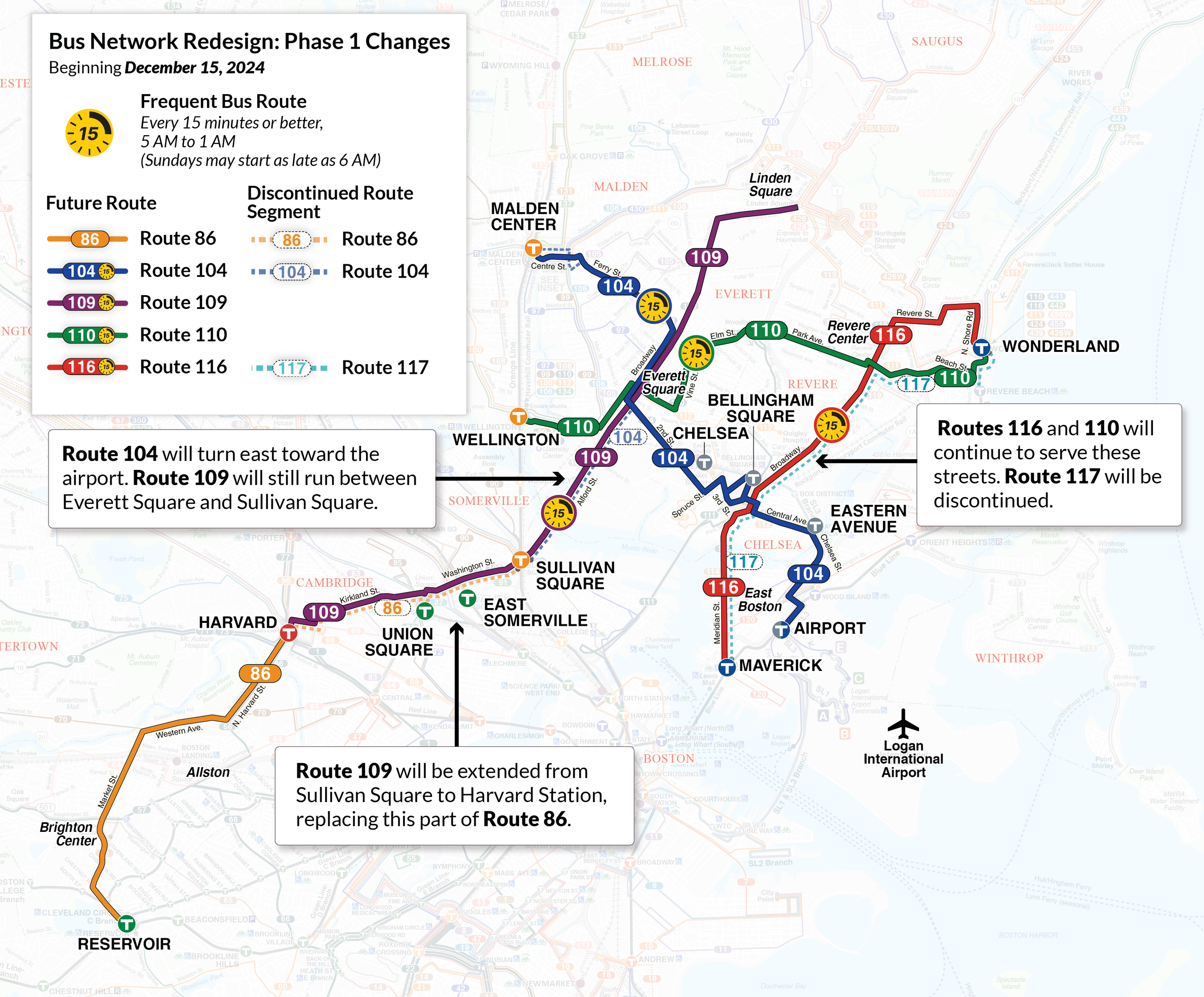I'd think that upgrading the 31 and 16 to KBR status is probably more on the "low hanging fruit" end of things that would be up front and center of phase 2, as it does not require adding new bus stops, rerouting buses, or more buses, aside from improving off peak frequencies to match peak frequencies (and maybe an extra bus or two for the 16). Perhaps the 21 can also be improved to "almost KBR" like the 31 is today. The 15 would complete its extension from St Peters Square to Fields Corner. Those are what I'd think they could "easily" do without many resources. Maybe also the 9 bus, but that serves Southie. That gives you like 4 or 5 routes that can be improved for very little, "right now", for a southside Phase 2. These changes about as identical of the scope of Phase 1, and extends the frequent grid pretty decently.
Same as above, but in list form:
- Extend 15 from St Peters Sq. to Fields Corner
- Upgrade 16 to KBR frequency as the T16
- Upgrade 21 to near-KBR status, similar to the 86 (extra off peak frequency)
- Upgrade 31 to KBR frequency, as the T31
- Upgrade 9 to KBR frequency, as the T9 (I'm iffy about this one since it serves Southie, but I can't find another "trivial" change to right size the scope of Phase 2 to match Phase 1)
I wonder if the T is trying to save as many resources to spring 2025 (
My estimate: April 6th 2025), that way they can run as much bus service as possible, trying to run 102% of pre-COVID service levels, so they can say "look, we're running more bus service than pre-COVID, either save us now, it's May 2025, or we'll hit the cliff in 6 weeks".
Also,
is the MBTA finally
going to undo the
COVID-induced service cuts from the operator shortages
for non-BNRD routes, or are the improvements only going to be BNRD improvements only? I'm talking about
restoring Fall 2021 service levels for
non-BNRD routes, prior to the
early 2022-mid-2024 service cuts.
They had a higher budgeted operator count for FY24 of 1,867 instead of 1,819 operators pre-COVID. Surely they can run 101-102% of pre-COVID service levels with an extra 48 operators right? Removing the express buses like the 325, 326, 448, and 449, that ran pre-COVID; should free up those operators to run more off-peak service on high ridership inner core routes.




